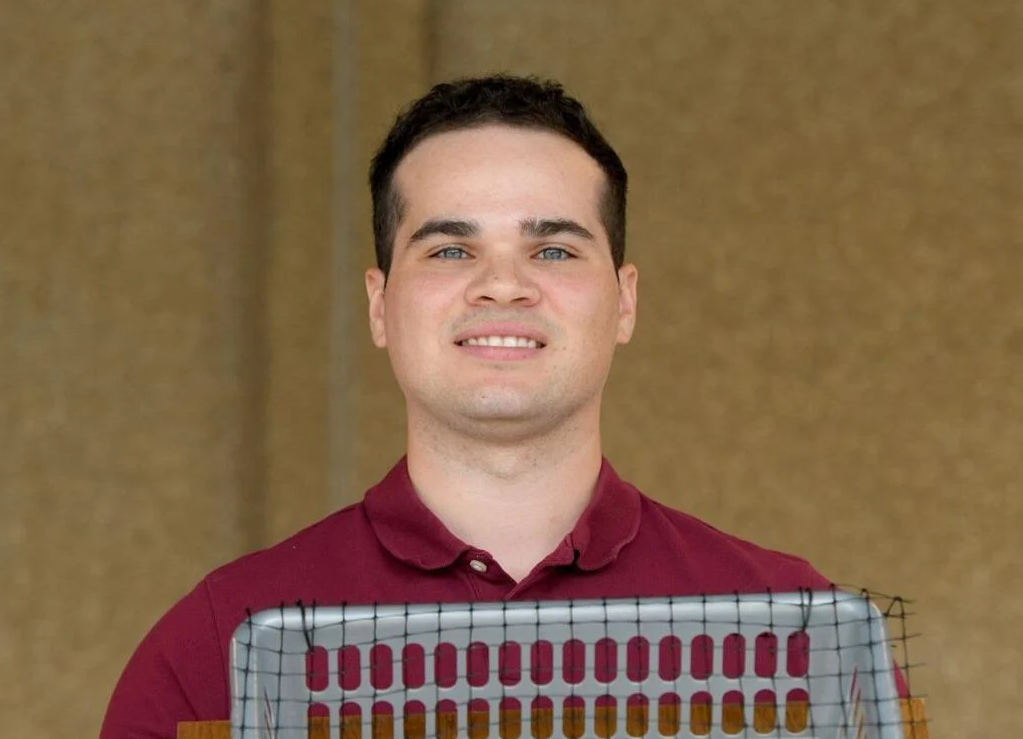Journal of Fluorine Chemistry – Ronald Gillespie Obituary

Journal of Fluorine Chemistry
journal homepage: www.elsevier.com/locate/fluor
Professor Ronald James Gillespie, O.C., F.R.S. (Canada), F.R.S. (UK), was born on August 21, 1924 in London, England and passed away on February 26, 2021 in Dundas, Ontario. He is survived by his wife Marcelle and by his daughters Ann (Stewart Patch) and Lynn (Geoffrey Levin) from his previous marriage to Madge (Garner, deceased 2008).Ronald Gillespie was interested in science from an early age and received a scholarship to a local grammar school (Harrow County Grammar School) at age 11, which he attended from 1936 to 1942. In 1942, when he had passed his final examination at school, Ron was awarded a bursary to do a special two-year wartime undergraduate degree in chemistry at University College, London (UCL). At this point, Great Britain was well into the war so that the chemistry department had to be evacuated to the University of Wales in Aberystwyth. Toward the end of the second year, Christopher (later Sir Christopher) K. Ingold, who was head of the department and a pre-eminent physical organic chemist, asked that Ron remain at UCL to work for his Ph.D. under Ingold’s supervision. When it seemed clear that the war was coming to an end, the department moved back to London in the summer of 1944. Ingold had a team working on aromatic nitration, and put Ron to work on the cryoscopy of nitric acid in sulfuric acid to look for the nitronium ion. Fellow students were taking other approaches using Raman spectroscopy, attempting to prepare stable NO2+ salts, and working on the kinetics of aromatic nitration. It was at this point that Ron began to wonder what else might be achievable in sulfuric acid, and thus began the quest for other superacid systems of even greater acidity and studies of their unique abilities to stabilize novel and important chemical species that were otherwise elusive, and often had unusual structures.
Ron was appointed an Assistant Lecturer at UCL prior to receiving his Ph.D. degree in 1949. Subsequent to receiving his Ph.D., Ron continued at UCL as a Lecturer, where he continued to carry out research on strong acid systems and taught inorganic chemistry. Ron Gillespie continued his investigations into superacid media which led to his technically difficult electrical conductivity measurements of 100% sulfuric acid and a definitive description of the solvent that would prove to be the first superacid medium. In the course of these investigations, it was shown that the electrical conductivity of pure sulfuric acid is predominately associated with the Grotthus chain mechanism of proton transfer (proton jumping), rather than simple transport of H3SO4+ and HSO4– ions. The pure solvent studies provided the foundation for subsequent investigations of new strong acids such as HSO3F, HB(HSO4)4, HSO3F-SbF5 (so-called “magic acid”). The new superacids would enable the preparation of stable solutions of important intermediate species such as acylium ions and carbocations. They are now essential tools of inorganic and organic chemistry, providing acidities far beyond the reach of the acidic aqueous solutions. Superacid media would later provide the means to prepare a diverse range of main-group inorganic cations.
In 1953-54, Ron received a Commonwealth Fund Fellowship to work in the U.S. at Brown University where he did dielectric measurements on suIfuric acid. These were difficult measurements because 100% sulfuric acid is very highly conducting owing to its extensive self-dissociation. Ron obtained his D.Sc. degree from UCL in 1957 and in the following year, he received a very attractive offer from McMaster University. However, his acceptance of the offer was conditional, and stipulated that a commercial NMR spectrometer, capable of running 19F and 1H spectra, and a Raman spectrometer be purchased for his use.
The NMR spectrometer, a Varian HR-60 operating at 56.4 MHz for 19F, was one of the first commercial NMR spectrometers in Canada. Almost simultaneous with the arrival of the Chemistry Department’s first NMR spectrometer, Ron offered the first NMR course at McMaster in the fall of 1959 and continued to do so in subsequent years. The NMR facility was unique in eastern Canada and, through Ron Gillespie’s generosity, it was made available to George A. Olah, then at Dow Chemical in Sarnia, Ontario, who carried out some of his earliest investigations on carbocations in superacid media. George Olah was awarded the Nobel Prize in Chemistry in 1994 for his lifetime work on carbocation systems. Ron was also responsible for introducing Raman spectroscopy as a routine tool for structure determination in inorganic chemistry into Canada shortly after his arrival at McMaster.
Ron Gillespie and his co-workers were quick to use the modern physicochemical and spectroscopic tools to structurally characterize newly identified species. For instance, Ron’s group provided the first conclusive evidence for the polyatomic nature of the I2+ and I42+ species. The Gillespie lab also had a strong focus on fundamental inorganic fluorine chemistry, and utilized weakly coordinating fluoro-anions, superacid media, and oxidants such as HSO3F-SbF5, HF-AsF5, and S2O6F2 for the syntheses of other exotic species such as Br2+, Br3+, S42+, S82+, S192+, Se42+, Se102+, Te42+, Te62+, Te4Se42+, and Hg32+ in both solution and crystalline salts. The structures of many of these species, determined by X-ray crystallography, brought many surprises, and deepened our understanding of chemical bonding.
Ron was excited by the discovery of the noble-gas compounds, which provided an obvious opportunity to show that VSEPR reliably predicted their structures. The author, then a Ph.D. student (1971-73) in Ron Gillespie’s group, used superacid solvent media such as HF and HF-SbF5 to prepare noble-gas fluoride cations, e.g., XeO2F+, XeOF3+, and XeF3+. Characterization of these and other noble-gas species involved extensive use of 19F NMR and Raman spectroscopies as well as single-crystal X-ray diffraction. Ron’s research supervision was characterized by gentle guidance, support, and freedom to find one’s own research path, as was typical for so many of us.
Professor Gillespie’s distinguished fifty-year scientific career, most of it spent at McMaster University, is highlighted by the discovery and characterization of superacid media, the earliest identification of many polyatomic cations of the main-group elements, and early studies of noble-gas fluoro- and oxyfluorocations. He is perhaps best known for the ubiquitous rules of the Valence Shell Electron Pair Repulsion (VSEPR) model of molecular geometry; thus a significant part of his legacy to chemistry is familiar to anyone who has taken freshman chemistry. The VSEPR model had been advanced in 1957, when together with his Australian colleague, Ronald (later Sir Ronald) Nyholm, Ron Gillespie published “Inorganic Stereochemistry” in Quarterly Reviews of the Chemical Society (volume 11, page 339). G.N. Lewis first described valence in terms of the electron pair bond and the octet rule. The VSEPR model extends the Lewis picture to account for molecular geometry in terms of Pauli principle repulsion of electron domains (either bonding or nonbonding) about each atom and accounts for hyper-valent species. The extraordinary simplicity and success of this model made it an essential component of the freshman chemistry curriculum around the world. The model was elaborated on and applied extensively in two books authored by Gillespie: “Molecular Geometry“ (1972) and “The VSEPR Model of Molecular Geometry” (1991, with István Hargittai).
Ron Gillespie continued his research after retirement in 1989. He collaborated with Prof. Richard F. W. Bader and several of Bader‘s students and postdoctoral fellows in conducting atoms in molecules (AIM) analyses of bonding in a wide range of molecules. Ron’s goal was to improve upon the VSEPR model by mainly accounting for the exceptions to its rules that challenged his understanding.
Ron Gillespie’s longstanding interest in chemical education also led him to develop the VSEPR model as an aid to teaching and was implemented in two innovative first-year chemistry texts, which he co-authored. His many contributions to teaching have been recognized by the Manufacturing Chemists‘ College Chemistry Teaching Award (1972), the Union Carbide Award of the Chemical Institute of Canada (1976), and the McMaster Students Union Award for Excellence in Teaching (1983).
Among Prof. Ronald J. Gillespie’s many awards and recognitions are: Election to Fellowship in the Royal Society of Canada (1965), ACS Award for Distinguished Service to the Advancement of Inorganic Chemistry (1973), Queen Elizabeth II Silver Jubilee Medal (1977), ACS Award for Creative Work in Fluorine Chemistry (1981), Election to Fellowship in the Royal Society, London (1977), Henry Marshall Tory Medal of the Royal Society of Canada (1983), Izaak Walter Killam Memorial Prize of the Canada Council for Pure Science (1987), and Member of the Order of Canada awarded by the Governor General of Canada (conferred May 3, 2007; invested on February 22, 2008).
- For more detailed accounts of Professor Ronald J. Gillespie’s scientific career and achievements, the reader is referred to Edward A. (Peter) Robinson’s article in Coordination Chemistry Reviews, 2000, 197, 3–19, and to an interview with Ronald J. Gillespie that was conducted by István Hargittai in March 1998 and published in The Chemical Intelligencer, 1999, 5, 6–10.
Related News
News Listing

August 22, 2024

April 17, 2024

